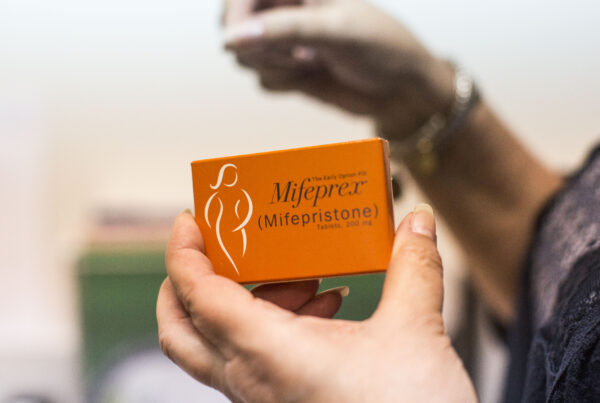One of the deadliest drugs ever found on the street has set off alarm bells in Texas and around the country, and it’s being tied to the rise of social media.
According to an expert who studies drug trafficking, fentanyl is the new “social media drug” and Mexican criminal groups are exploiting the technology to dominate the market – recruiting dealers in Texas to peddle the opioid.
Alfredo Corchado wrote about this trend for the Dallas Morning News and joined Texas Standard to discuss. Listen to the story above or read the transcript below.
This transcript has been edited lightly for clarity:
Texas Standard: You report, in general, anyone with a smartphone and a Wi-Fi can connect with criminal networks that bootleg deadly pills. Could you tell us more? How’s this working?
Alfredo Corchado: You might be a member of the Mexican cartel living in Mexico, living in Los Angeles or Durango, and all you do is use social media – WhatsApp, Messenger or other other platforms – to distribute fentanyl to a certain address. Whether it’s Houston, whether it’s Dallas, whether it’s Austin, you don’t need to cross the border. I mean, it’s that simple.
And what about on the end user front? Are they using social media to contact dealers in Texas?
Exactly. I mean, in Dallas, for example, they would be able to call their dealers and say, “I need you to get to the street and sell this and that.” But they’re also able to recruit the dealers working for them, you know, through platforms like TikTok, like Instagram. And then they use another platforms, like Venmo, to make the money transactions.
Well, you mentioned a high profile case from Carrollton involving almost, what, about ten juveniles who overdosed and three deaths there.
Right. It’s a high profile case in Carrollton, Texas, that resulted in as many as ten juvenile overdoses. Three of them died. And the man used social media to make the drug deals and describe the quality of pills that he was selling.
Are there certain social media platforms in particular that are popular? You’ve mentioned several.
So there are two kinds. If you’re using WhatsApp that’s using Messenger and Signal, Telegram… that’s more used for encrypted messages. And if you’re using, say, Instagram or TikTok, you’re essentially showing the pills. I mean, promoting the pills, in this case, fentanyl. And you’re also recruiting young people. I mean, they really like the youth, you know. “Come to the border and bring this truck. It’s good money.” Sometimes they’re offering $500,000 to make a quick trip.
Well, now, what are social media companies saying about their role? I mean, some would likely see them as accomplices, I would imagine.
Well, you have experts like Aileen Teague at Texas A&M who was calling on the federal government for more regulation to try to stop this – just try to at least have a chance to correct the issue, because it’s, I mean, just about anyone can go on social media and sell this. That’s why it’s called the “social media drug.”
What about current drug interdiction efforts? Are officials putting their focus in the wrong place?
Well, experts say, you know, all the focus was on building walls. 86% of the convictions of people smuggling in fentanyl, for example, is coming through U.S. legal ports of entry, and it’s being conducted by U.S. citizens. So critics say, “no, you know, the focus should not just be on walls. You have to go after these social media companies and you have to have more technology along these ports of entry to try to detect it.” Last year, I mean, 100,000 people died of overdoses – about 70% of them just from fentanyl alone.
In fact, here in Texas, you report about 900 Texans died from fentanyl-related overdoses in 2020. That jumped to more than 1,600 in 2021. That’s an increase of more than 80%. Are Texas officials aware of this method of trafficking? And if so, what are they, or what can they, do about it?
Well, they’ve been ringing the alarm bells. But again, advocates for more regulation say, you know, the focus can’t just be building border walls. You have to go after social media companies and again, go after the people crossing it legally – the U.S. citizens crossing it legally through U.S. ports of entry.












